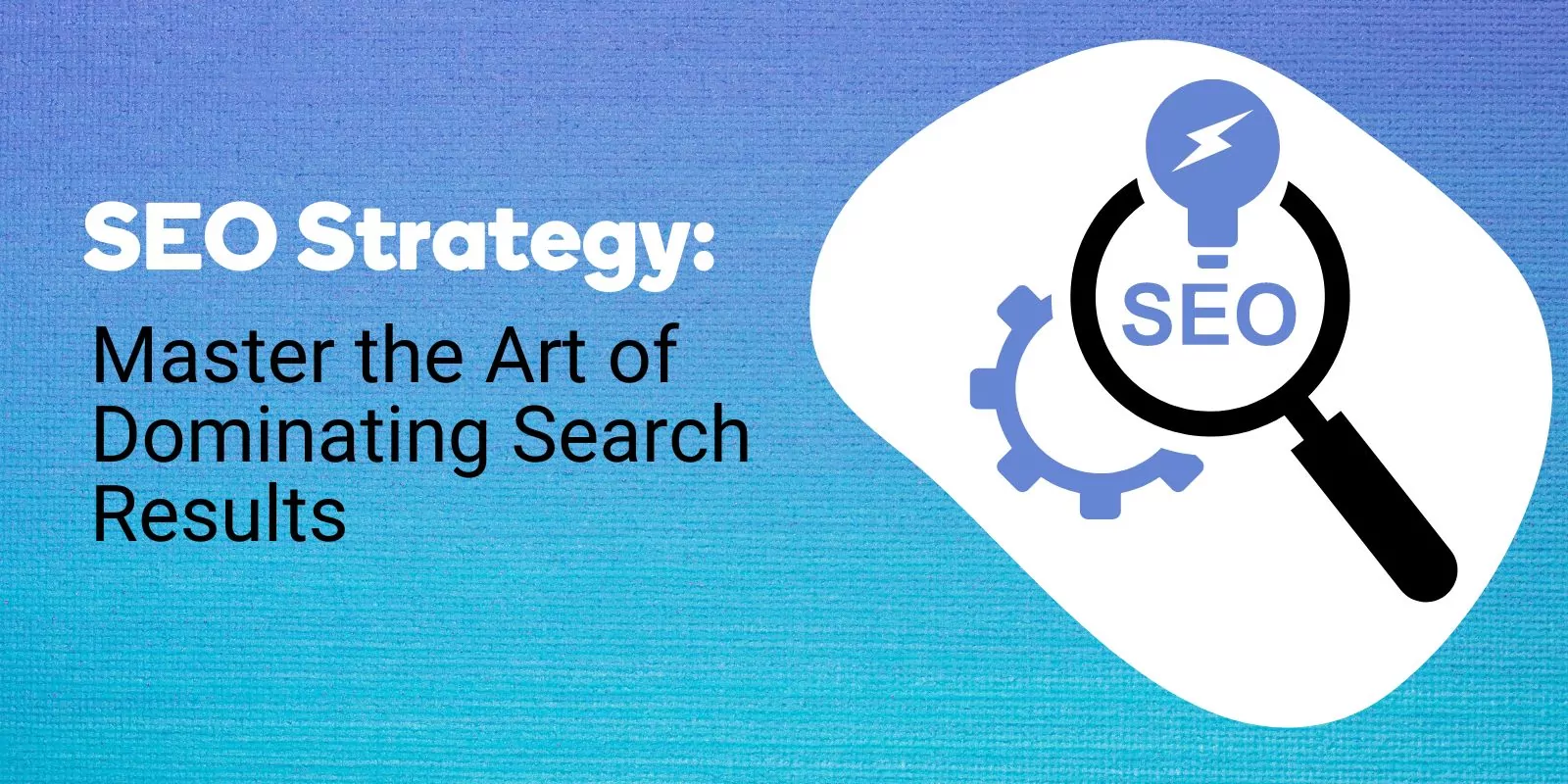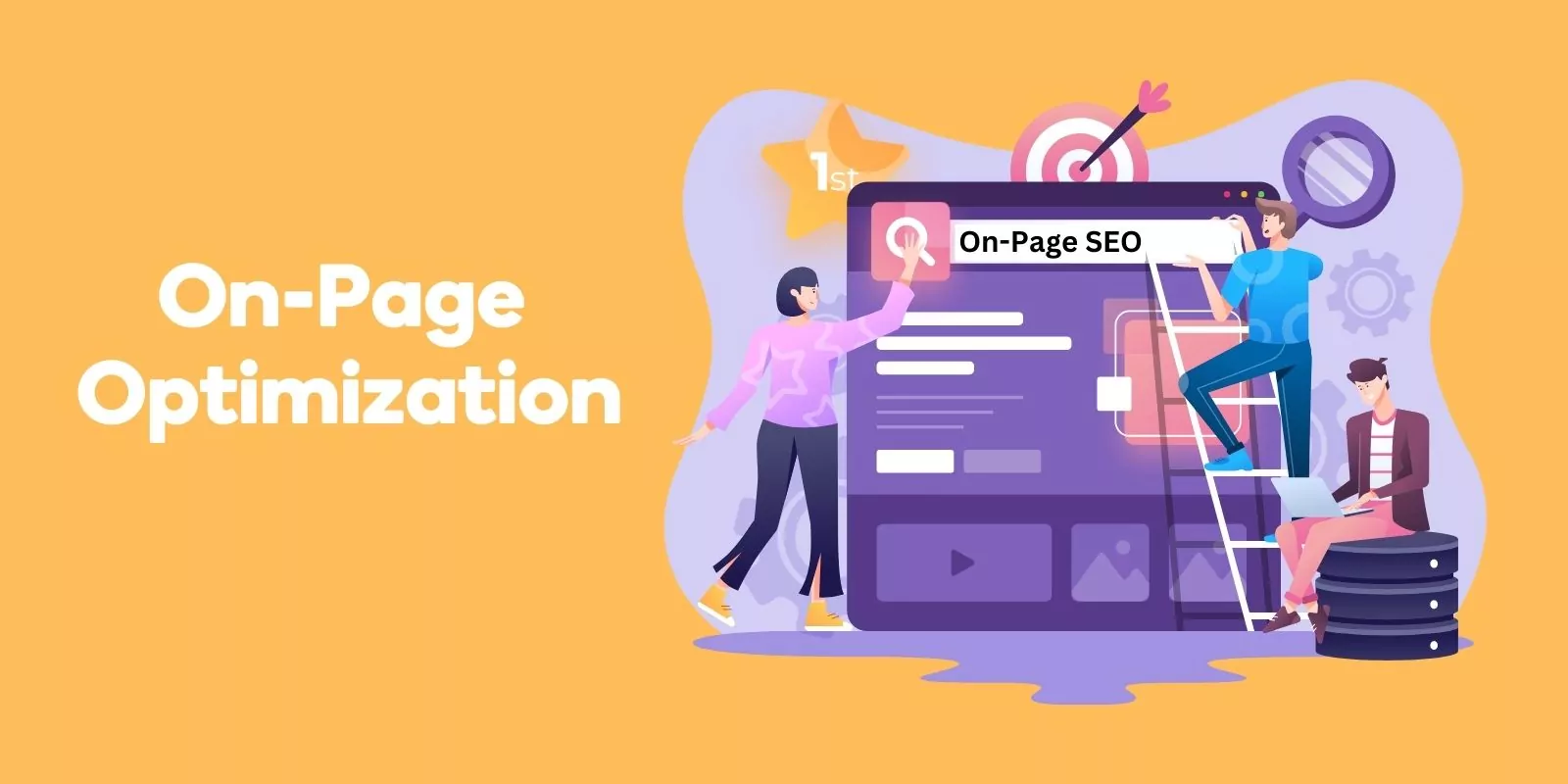A well-crafted and comprehensive SEO strategy is critical for businesses looking to increase their online visibility, drive organic traffic, and grow their customer base.
By optimizing your website for search engines, you make it easier for potential customers to find your products or services online, ultimately leading to increased sales and revenue.
In this blog post, I’ll explore the key components of a successful SEO strategy and provide actionable insights on how to implement them effectively for your business.
Keyword Research: The Foundation of Your SEO Strategy
Keyword research is an essential starting point for any successful SEO strategy.
By identifying the most relevant and high-traffic keywords for your business, you can optimize your website to rank higher in search engine results and attract your target audience.
Here’s 10 actionable tips and how you can easily implement them into your business:
- Use tools like Google Keyword Planner, SEMrush, or Ahrefs to find keywords with a good balance of search volume and competition.
- Focus on long-tail keywords, as they tend to have lower competition and higher conversion rates.
- Analyze your competitors’ websites to identify keywords they are targeting and explore opportunities for your own site.
- Group related keywords together to create topic clusters for your content strategy.
- Research and target location-specific keywords if your business operates in a specific region or serves a local audience.
- Monitor keyword performance over time to identify trends and make adjustments as needed.
- Regularly update your keyword list to account for changes in user search behavior and industry trends.
- Use Google Trends to identify seasonal search patterns and tailor your content accordingly.
- Integrate your target keywords naturally into your content, avoiding keyword stuffing which may lead to search engine penalties.
- Track your keyword rankings and analyze the data to measure your SEO success and identify areas for improvement.
Important stat: Long-tail keywords account for 70% of all web searches.
On-Page Optimization: Fine-Tuning Your Website for Maximum Impact
On-page optimization is the process of refining the content and structure of your website to improve its visibility and performance in search engine results.
This includes optimizing your title tags, meta descriptions, headers, and URL structures to include your target keywords, as well as ensuring that your website is easily navigable and user-friendly.
Here’s 10 actionable tips for on-page optimization and how you can implement them in your business:
- Include your target keyword in the title tag, meta description, and at least one header (H1, H2, or H3) on each page.
- Ensure your website is mobile-friendly, as search engines prioritize mobile-optimized sites.
- Create high-quality, engaging content that provides value to your target audience and incorporates your target keywords naturally.
- Use descriptive, keyword-rich alt tags for images to improve image search visibility.
- Optimize your website’s load speed, as faster-loading sites are favored by search engines and users alike.
- Implement a clear and logical site structure with intuitive navigation to improve user experience and search engine crawling.
- Use internal linking to guide users and search engines to relevant content within your site.
- Regularly update and refresh your content to keep it relevant and valuable to users.
- Monitor and fix broken links, as they can negatively impact user experience and search engine rankings.
- Utilize schema markup to provide search engines with additional information about your content, potentially leading to enhanced search result listings.
Important stat: A one-second delay in page load time can lead to a 7% loss in conversions (Neil Patel).
Off-Page Optimization: Building Your Website’s Authority and Trust
Off-page optimization involves activities outside of your website that can improve its authority, trustworthiness, and visibility in search engine results.
This primarily includes link building, social media marketing, and online reputation management.
Here’s 10 actionable tips for off-page optimization and how you can implement them in your business:
- Develop high-quality, shareable content that naturally attracts backlinks from other websites.
- Reach out to industry influencers and bloggers to collaborate on content and generate backlinks.
- Participate in online forums and communities relevant to your industry, providing valuable insights and building your reputation.
- Monitor and respond to online reviews, showcasing your commitment to customer satisfaction and building trust with potential clients.
- Use social media platforms to share your content and engage with your audience, driving traffic to your website.
- Leverage guest posting opportunities on reputable websites to showcase your expertise and gain valuable backlinks.
- Establish relationships with authoritative websites in your industry through networking and collaborations.
- Utilize tools like Ahrefs or Moz to analyze your backlink profile and identify opportunities for improvement.
- Promote your content through email marketing, encouraging your subscribers to share your content and generate additional backlinks.
- Monitor your competitors’ backlink profiles to identify potential link-building opportunities and stay ahead of the competition.
Important stat: Businesses that blog receive 97% more backlinks than those that don’t.
Technical SEO: Ensuring Search Engines Can Easily Crawl and Index Your Website
Technical SEO involves optimizing your website’s infrastructure, making it easier for search engines to crawl and index your content.
This includes addressing issues like site speed, crawl errors, duplicate content, and mobile optimization.
Here’s 10 actionable tips for improving your technical SEO and how you can implement them in your business:
- Use Google Search Console to monitor and address any crawl errors or indexing issues.
- Implement an XML sitemap to provide search engines with a roadmap of your website’s structure and content.
- Optimize your site’s load speed by compressing images, minifying CSS and JavaScript files, and using a content delivery network (CDN).
- Use canonical tags to signal to search engines which version of a duplicate content page should be indexed.
- Ensure your website is mobile-friendly by implementing a responsive design or creating a separate mobile version of your site.
- Implement HTTPS to provide a secure browsing experience for your users and improve your website’s credibility in search engine rankings.
- Use tools like Screaming Frog or DeepCrawl to audit your website for technical issues and areas for improvement.
- Address any broken links or redirect chains to improve user experience and search engine crawling.
- Optimize your website’s URL structure to be descriptive, keyword-rich, and easily navigable.
- Implement structured data (schema markup) to enhance the way search engines understand and display your content in search results.
Important stat: 40% of users will abandon a website if it takes more than 3 seconds to load.
Local SEO: Targeting Customers in Your Geographic Area
Local SEO focuses on optimizing your website for searches related to a specific geographic location, helping you attract customers in your area.
This is especially important for brick-and-mortar businesses, service providers, and companies that rely on local clientele.
Here’s 10 actionable tips for improving your local SEO and how you can implement them in your business:
- Create and optimize a Google Business listing, ensuring that your information is accurate, consistent, and up-to-date.
- Encourage satisfied customers to leave reviews on your Google Business listing, building trust and credibility with potential clients.
- Use location-specific keywords in your website’s content, meta tags, and URLs to signal your geographic focus to search engines.
- Optimize your website for “near me” searches by including local landmarks, neighborhoods, and relevant service areas.
- List your business in local directories and online business listings, ensuring consistent NAP (name, address, phone number) information across all platforms.
- Create location-specific pages on your website to target different areas you serve, showcasing your services and expertise.
- Develop locally-focused content, such as blog posts, case studies, and videos that showcase your involvement in the community or industry events.
- Leverage local link-building opportunities by partnering with other local businesses, sponsoring events, or participating in community initiatives.
- Use schema markup for local businesses to enhance your website’s visibility in search engine results and provide valuable local information.
- Monitor your local search rankings and performance using tools like Google Analytics, Ahrefs, or Moz Local to identify areas for improvement and growth.
Important stat: 46% of all Google searches have local intent.

Award-Winning
Sales Funnel & Website Expert
Ready for Revenue – Not Just “Traffic”?
- Websites that Work: Clean, fast, built to convert – no design fluff.
- Funnels that Sell for You: Step-by-step paths that turn clicks into paying customers.
- SEO That Hunts Buyers: Show up exactly when prospects reach for their wallets.
Tracking and Measuring Your SEO Success
To ensure your SEO strategy is effective and driving results, it’s crucial to track and measure your performance regularly.
By monitoring key performance indicators (KPIs) and adjusting your approach based on data, you can optimize your efforts and maximize your return on investment.
Here’s 10 actionable tips for tracking and measuring your SEO success and how you can implement them in your business:
- Set up Google Analytics to track important metrics like organic traffic, bounce rate, average session duration, and goal completions.
- Identify and track relevant KPIs, such as keyword rankings, organic click-through rate (CTR), and conversions, to assess the success of your SEO efforts.
- Use Google Search Console to monitor your website’s visibility in search results, identify any crawl errors or indexing issues, and uncover opportunities for optimization.
- Leverage SEO tools like Ahrefs, Moz, or SEMrush to conduct keyword research, analyze your backlink profile, and track your competition.
- Set up custom reports and dashboards in Google Analytics to monitor your most important metrics and gain insights into your website’s performance.
- Use conversion tracking to measure the impact of your SEO efforts on your business’s bottom line, attributing revenue and leads to specific campaigns and tactics.
- Conduct regular SEO audits to identify areas for improvement, address any issues, and stay up-to-date with industry best practices.
- A/B test different on-page elements, such as headlines, meta descriptions, and calls-to-action, to optimize your content for user engagement and conversions.
- Monitor your competitors’ SEO strategies and performance to identify gaps in your approach and stay ahead of the competition.
- Regularly review and update your SEO strategy based on data and insights, ensuring continuous improvement and growth.
Important stat: SEO leads have a 14.6% close rate, compared to just 1.7% for outbound leads.
Staying Updated on SEO Trends and Best Practices
The world of SEO is constantly evolving, and keeping up with the latest trends and best practices is crucial for maintaining a competitive edge.
By staying informed and adapting your SEO strategy to incorporate new developments and techniques, you can ensure that your efforts remain effective and up-to-date.
Here’s 10 actionable tips for staying updated on SEO trends and best practices:
- Follow industry-leading SEO blogs and publications, such as Search Engine Journal, Moz, and Ahrefs, for the latest news, tips, and insights.
- Subscribe to SEO newsletters and podcasts to stay informed about new developments and best practices in the field.
- Attend SEO conferences, webinars, and workshops to learn from industry experts and network with other professionals.
- Join online SEO communities, forums, and social media groups where you can ask questions, share ideas, and learn from the experiences of others.
- Stay updated on Google’s algorithm updates and guidelines, as these can have a significant impact on your website’s search rankings and performance.
- Monitor your competition to identify new trends and techniques they’re using, and adapt your own SEO strategy accordingly.
- Invest in ongoing training and professional development for yourself and your team, ensuring that your SEO skills and knowledge remain current.
- Experiment with new SEO tools and technologies to improve your efficiency and stay ahead of the curve.
- Regularly review and update your SEO strategy, incorporating new tactics and approaches as needed based on industry trends and best practices.
- Connect with other SEO professionals and experts, building a network of peers who can share insights, advice, and support.
Important stat: 57% of B2B marketers say SEO generates more leads than any other marketing initiative.
Frequently Asked Questions
What are the top 5 SEO strategies?
- High-Quality Content Creation: Producing valuable, unique, and engaging content that naturally attracts backlinks and resonates with your audience is paramount. This includes blog posts, articles, infographics, and videos that incorporate relevant keywords.
- Keyword Research: Identifying and targeting the right keywords is fundamental. This involves researching what keywords and phrases your target audience uses when looking for products or services similar to yours, and strategically incorporating those keywords into your content.
- On-Page SEO: This includes optimizing elements like title tags, meta descriptions, headers, and URL structure. It’s also important to ensure that your website is mobile-friendly, provides a good user experience, and loads quickly.
- Off-Page SEO: Building high-quality backlinks from reputable sources helps boost your site’s credibility and authority in the eyes of search engines. This can be achieved through guest blogging, influencer marketing, and social media engagement.
- Technical SEO: This involves optimizing your website’s structure for search engine crawling and indexing. It includes creating a sitemap, implementing SSL for security, optimizing page load times, and ensuring your website is mobile-friendly.
What is an example of an SEO strategy?
An example of an SEO strategy would be a detailed plan that outlines how you will improve your website’s visibility in search engines. This could involve performing keyword research to identify the most relevant terms for your business, then creating high-quality, informative content around these keywords. It could also include on-page SEO tactics like optimizing meta tags, improving website structure, and boosting page load speed.
Off-page SEO, like building quality backlinks, engaging with your audience on social media, and generating positive reviews, could also be part of the strategy. This plan should be based on an understanding of your target audience, competitor analysis, and SEO audit results.
What are 3 main areas of SEO?
The three main areas of SEO are:
- On-Page SEO: This refers to optimization tactics performed on your website, such as keyword optimization in content and meta tags, URL structure, mobile-friendliness, and internal linking.
- Off-Page SEO: This involves tactics performed outside of your website to improve its visibility, like backlink building, social media marketing, and influencer outreach.
- Technical SEO: This focuses on improving your website’s technical aspects, such as site speed, mobile optimization, crawlability, indexing, and security.
What are the 5 pillars of SEO?
- Technical SEO: This involves ensuring your site is crawlable and indexable, along with improving site speed, mobile-friendliness, and website security.
- Content: Creating high-quality, engaging, and relevant content is crucial. It not only attracts users but also sends positive signals to search engines about your website.
- On-Page SEO: This includes optimizing elements like meta tags, URLs, and keyword usage within your content.
- Off-Page SEO: Activities like link building, social media marketing, and online reputation management fall under this category.
- User Experience (UX): A positive user experience, which includes mobile-friendly design, intuitive navigation, and high-quality content, can improve your site’s standing in search results.
What are the 7 types of SEO?
- On-Page SEO: Focuses on content and elements on your website’s pages.
- Off-Page SEO: Involves efforts taken outside of your website, like building backlinks and social signals.
- Technical SEO: Refers to optimizing the technical aspects of your website like speed, crawlability, and mobile optimization.
- Local SEO: This focuses on optimizing your website to rank higher for a local audience.
- Mobile SEO: Optimizing your site for mobile devices to provide a great user experience for mobile users.
- E-commerce SEO: Involves optimizing product descriptions, product category pages, user reviews, and more on an ecommerce website.
- Voice Search SEO: This involves optimizing your content to appear in voice search results, considering the conversational nature of voice queries.
What are the 4 stages of SEO?
- Research: This involves keyword research, competitor analysis, and understanding your target audience’s behavior and preferences.
- On-Site Optimization: This includes optimizing your website’s content, structure, meta tags, URL structure, and internal links. It also involves technical aspects like improving site speed and mobile optimization.
- Off-Site Optimization: This stage involves improving your website’s authority and reputation through link building, social media marketing, influencer outreach, and generating positive reviews.
- Monitoring and Adjustment: In this final stage, you monitor your website’s performance using tools like Google Analytics and adjust your strategies based on the data. This could include making changes to your content, trying different keywords, or improving your link building efforts.
Conclusion
By implementing a comprehensive SEO strategy and staying updated on the latest trends and best practices, you can position your business for long-term success in the digital landscape.
Remember, the key to achieving lasting results with SEO lies in continuous improvement, ongoing learning, and a commitment to delivering value to your audience.
By following these actionable tips and insights, you can build a strong online presence, attract more customers, and grow your business. So, don’t wait any longer – start investing in your SEO strategy today!









